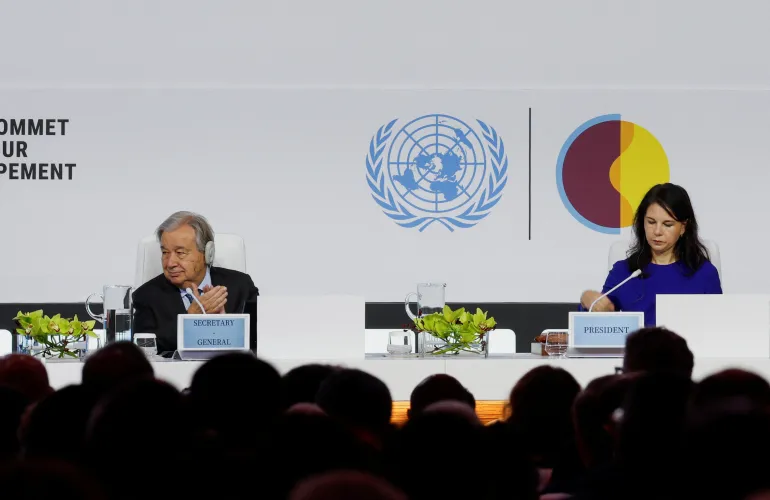The Global Development Financing System is at a Crossroads
In a time of great shifts, it is of note that the global development financial system is also at a crossroads and in need of reform for reform. From the articles listed below, I observe four developing themes, whether explicitly or implicitly mentioned. I will describe them below and conclude that these are the four main realities that the new development financial system would need to be shaped around.
First, we see the emergence of a new class of “middle class” emerging markets with a greater stake in the multilateral system, greater global economic connections, a greater desire for agency and voice in engaging with the Global North, and a greater ability to navigate the myriad cross-border economic systems that have evolved in the past 60 years. Let’s broadly generalize these as middle-income countries, including ASEAN, countries in Latin America, Central Asia, parts of the Middle East, and perhaps parts of Africa. For these countries, Alldo Januardy aptly comments: “The Global South is no longer waiting to be included. It is building something of its own—shaped by necessity, grounded in local priorities, and driven by the hard lessons of dependency.” Perhaps it is these countries that are most able and well-suited to take advantage of decentralized funding models with greater autonomy and choice. Financial innovations relevant for these groups of countries include multilateral regional development banks (Setser) or programs of public-private financing (Mundy) and require financial liberalization for them to have more access to existing global capital markets. These countries have the foundations of economic activity and are ready to access a more diverse array of funding mechanisms to fund a more diverse array of activities.
Second, we also note a bifurcation in what used to be lumped together as emerging markets. For poor countries vulnerable to debt, especially if they are also vulnerable to climate change and conflict, we observe a slide backwards in their internal economic capacity. These countries have not been able to withstand the pressures of COVID on their own and in some cases have fallen into distress. Further, it seems that the recent shocks may have so stressed their systems that their rates of growth have been dampened in the medium to longer term. These countries need access to immediate financing and fundamental support. IMF President Kristalina Georgieva says that these countries need $440bn in additional financing over 5 years to prevent further crises. Furthermore, these countries face difficulties as funding for the IMF and WB by developed countries retreats. Ms. Georgieva suggests further contribution to the IMF’s PRGT facility, leveraging up the World Bank balance sheet. Personally, I think targeted support of the type described by The Economist in “The Demise of Foreign Aid Offers an Opportunity”—wherein capital is deployed in targeted areas and projects where governments and UN agencies have coordinating power in relation to global crises like climate change and where there exist positive spillover effects—is more relevant. On the other hand, Makhtar Diop described a new securitization model of combining various EM loans and selling them at a higher credit rating. For these assets, I think such an approach is misguided and risks landing existing asset managers with toxic assets in the future. Many of these countries do not have the economic nor governance capacity to participate in financial markets as a normal member.
Third, China has become the largest bilateral creditor to many developing countries with a different model of lending driven by different priorities. Speaking from knowledge derived outside of this class, its early expansion into the Belt and Road Policy more than a decade ago was driven by an opportunity to offload pressure from the accumulation of massive FX reserves and internal spare capacity in primary and infrastructure industries. Now, those priorities have transitioned to a more transactional, targeted approach targeting specific sectors. Furthermore, Chinese creditors often took on projects that would qualify for participation of traditional Paris Club lenders. All that is to say, there is quite a gap between the Chinese and traditional Paris Club lenders that needs to be bridged. Efforts to do this are already underway through the G20 Common Framework for Debt Treatments. The US desires China to become a “responsible creditor” on its own terms (Crebo-Rediker), which China does not desire to do as it has its own model and priorities. A more cohesive global consensus on global lending will require China’s participation and hence the ability of China and the US-led Paris Club to come to some sort of agreement.
Finally, all these realities are underpinned by the backdrop of the globalization, economic development, and innovation of the last 70 years in the Pax Americana. Economic models and industries are now more numerous and diverse than ever before, with many variations of interlinkages, creating a complex and intricate web of economic relationships. Furthermore, within the financial system itself, technologies like electronic trading, online retail participation, new financial products, and blockchain have made capital more transmutable than ever before. It is no surprise that we are at an exciting crossroad and in need of reform. In fact, the Bretton Woods model has done remarkably well to facilitate and accommodate the changes up to this point! I am inspired by the amount of work that has gone into creating this system and hope that the global community will again find its way forward.


